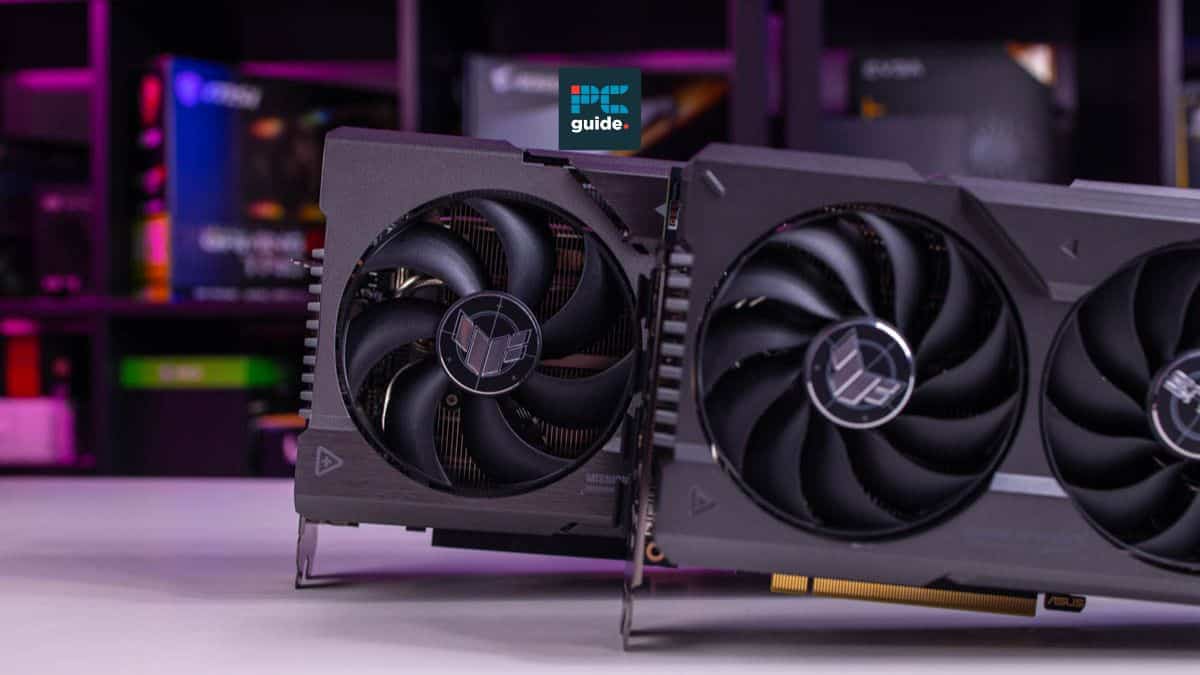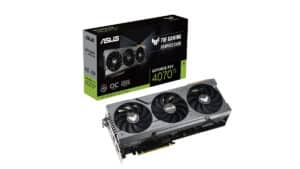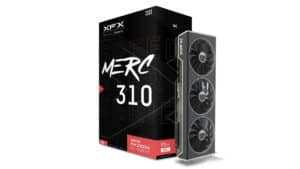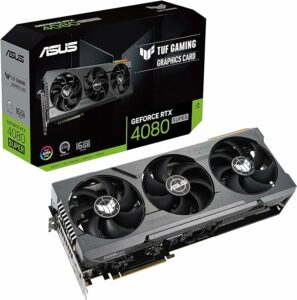Best GPUs for Intel i5-13500 – our top picks

Table of Contents
A year on from its release, the Intel i5-13500 has established itself as a powerful all-rounder that’s comfortably dominated the mid-range CPU market. Naturally, a processor of this caliber is worthy of a graphics card that enhances its capabilities; it’s not new knowledge that pairing your processor with the right GPU can make all the difference when it comes to smooth and responsive graphics performance, but that doesn’t mean the process of choosing one has become any easier. That’s where we come in with our picks of the best GPU for Intel i5-13500.
With so many options on the market, it can be challenging to know which graphics card is best suited for your specific needs. In this article, we’ll explore some of the top GPUs that are compatible with the i5-13500, and help you determine which one is right for you and your system. It’s a versatile processor, so we’ve provided a versatile list of graphics cards that should serve the hardcore gamer, video editor, or graphic designer, weighing in on the pros and cons of each to help you make a truly educated choice.
Products at a Glance
How we picked the best GPUs for i5-13500
When picking the best GPUs for Intel i5-13500, there are several factors to take into consideration. Firstly, we look at the compatibility of the GPU with the CPU, as it’s important to choose a GPU that is optimized for the i5-13500 and can take full advantage of its capabilities. To situate the i5-13500 on the performance podium, you have to weigh in on its key specs: it’s got 14 cores in total, consisting of six performance cores and eight efficiency cores, and 20 total threads that put it at a huge advantage over the i5-12500 of the previous generation. Priced at $250, you’re looking at an excellent mid-range CPU for gaming that’s especially strong when you weigh up price to performance. In terms of an equal from over at Team Red, you’re looking at the Ryzen 7600X. So, on the whole, we can deduce that we want to be looking at the mid-range GPU market, occasionally brushing the higher end of that as it’s clear this processor can punch above its weight.
Additionally, we consider the specific tasks that the GPU will be used for, whether it’s gaming, video editing, or other graphics-intensive applications. This helps us determine the necessary performance level of the GPU and whether it’s suited for the user’s needs – this includes looking at specific features and capabilities such as clock speed, memory bandwidth, and power consumption. More importantly, as well as doing our fair share of market research, we’ve made sure to choose graphics cards that we have individually reviewed in-house, as you can’t downplay the gravity of hands-on experience when it comes to computer hardware. So, for all the fine details on specs, performance, and pricing, you can go ahead and read our RTX 4070 Ti review, RX 7900 XT review, RX 7600 XT review, and lastly, our RTX 4080 Super review.
By considering these factors, we can make an informed decision on the best GPUs for i5-13500 and provide recommendations that are optimized for specific use cases and budgets. Now the lineup has been revealed, let’s dive in to what makes each of these individual GPUs such a good pairing for the Intel i5-13500.
Product Reviews
- One of the best mid-range GPU from Nvidia's new-gen
- ASUS TUF design ticks the boxes for being both sleek and durable
- Strong 1440p player that benefits from 4th Generation Tensor Cores and 3rd Generation RT Cores
- Effectively replaced by the RTX 4070 Ti Super
- Might pull up short when it comes to 4K gaming
- Certainly at the top of the mid-range when it comes to pricing
Given the capabilities of the i5-13500, we’ve aimed our sights high and gone with the RTX 4070 Ti as our overall best pick to pair with Intel’s star mid-range CPU. If you’re gaming or content creating at 4K, this all-rounder powerhouse will truly sing when paired with the capabilities of this Raptor Lake gem.
Diving into some specs, this card packs 7,680 CUDA cores – 1,792 more than the base 4070 model – and 12GB GDDR6X VRAM on a 192-bit memory bus. As these are the cores that enact the GPU’s ability to handle and compute large amounts of data in parallel, it shouldn’t come as much of a surprise that this card makes quick work of most applications and software you throw at it, as demonstrated in our benchmarks. Of course, it’s also got its fast out-of-the-box speeds to thank for this, with the ASUS TUF Gaming RTX 4070 Ti OC edition capable of being overclocked to 2,730 Mhz with its boost clock or up to 2,760 Mhz with the OC mode. Not figures to be taken lightly, that’s for sure, and you’re definitely looking at one of the strongest mid-range players from Nvidia’s new generation of GPUs.
When it comes to additional features, internally you’re benefitting from the usual lineup of Nvidia DLSS 3.5, Reflex, Ansel, and more, and physically you won’t be disappointed either. The ASUS TUF design ticks the boxes for being both sleek and durable, with its vented metal exoskeleton, large fans, and large heatsinks being a winning combo for efficient cooling that looks stylish.
- Leverages the high-end RDNA 3 architecture for amazing performance for its price
- 20GB of VRAM is more than enough for both gaming and productivity
- Nice overclocking potential, with a boost clock speed of 2535 MHz
- Not the best ray tracing when compared to the RTX 4070 Ti
- Users would probably prefer to have the GDDR6X memory
- Could be considered overkill for a mid-range processor
As one of the leading RDNA 3 GPUs from AMD, many won’t be surprised to see the RX 7900 XT come up as the best AMD GPU for the i5-13500. Not only did it perform exceptionally in our review, but as it’s not as powerful as the 7900 XTX model, you won’t need to worry about bottlenecking the i5-13500 or a mismatched CPU/GPU pairing. Overall, you’re looking at a strong mid-range player that we rightfully awarded 4/5 stars.
Jumping into some specs, the XFX 7900 XT is a well-rounded GPU that delivers solid performance, with a boost clock of 2560 MHz, a total of 5,376 Stream Processors, and a 20GB GDDR6 memory pool built on a 320-bit memory bus. For reference, the i5-13500 has a performance-core base frequency of 2.50 GHz, so we’re on pretty much equal footing here. While the 320-bit interface will be more than enough to handle massive amounts of data going to and from the GPU for processing, it’s the 20GB VRAM that’s the star of the show here. This should be more than enough to handle 4K gaming and pretty much all your productive and content creation tasks. Additionally, this GPU features HDMI, DP, and USB Type-C ports, providing flexibility for connecting to different displays. This can be particularly useful for those who want to run multiple displays or connect to a VR headset.
Arguably, this GPU is one of the best 7000-series AMD graphics cards, and it offers impressive performance at a lower price point than other high-end GPUs – which is why it’s situated among the best GPUs for Intel i5-13500.
- Specs and price could be considered a well-matched GPU for the i5-13500
- Boasts the latest AMD Navi 33 architecture, so it's well optimised and future-proofed
- OC edition, so has a nice boost speed of 2539 MHz
- Native performance can be quite hit or miss
- Lags behind the 4060 and 4060 Ti in terms of performance
- Lacks DLSS 3.0
The Gigabyte RX 7600 XT OC is a great future-proof option for gamers looking to build a high-performance rig without breaking the bank. With 2,048 Stream Processors, 64 ROPs, and 128 texture mapping units (TMUs) on a 128-bit memory bus, this graphics card is a powerful piece of hardware that, like the i5-13500, performs well considering its price.
Straight out of the box, you’re getting a base clock of 2029 MHz and a boost clock of up to 2539 MHz with a bandwidth of 288 GB/s, which is a nice improvement over the original’s 1,720 MHz base and 2,655 MHz boost clock, and more than a fair companion to the clock speeds of the i5-13500. As well as getting strong 1080p performance that can stretch to 1440p, power consumption doesn’t have to be a worry. It leverages a fairly low power of 165W TDP, meaning any PSU above 450W should be more than sufficient for the 7600 XT.
Of course, the star selling point for this card is its price point. Coming in at $349.99, you’re getting a true mid-range price and performance that shouldn’t disappoint the entry-level gamers or creative professionals looking to pair up an i5-13500. You shouldn’t be disappointed design-wise either, as although Gigabyte takes the more subtle approach, this card is nonetheless attractive. Its classy black form factor has three axial-tech fans delivering exceptional cooling performance even under heavy workloads. The addressable RGB logo on the side of the card is a nice touch that adds a customizable flair to any build, and it can be programmed to match the colors of other components in the system, creating a visually stunning effect.
Overall, the Gigabyte RX 7600 XT OC is a fantastic option among the best GPUs for Intel i5-13500 that delivers impressive performance and excellent cooling capabilities, especially for its budget price point. With its powerful hardware and customizable features, this graphics card is a great choice for anyone looking to build a high-performance gaming rig with a CPU and GPU that will cost less than $600 combined.
- One of the only cards with over 10,000 CUDA Cores
- Performance that's almost as good as the flagship 4090
- A bit overkill if not playing demanding titles
- Not as readily available as other Nvidia 40-series cards
If you’re looking for a graphics card that can deliver top-of-the-line performance, the NVIDIA GeForce RTX 4080 Super is an excellent choice, especially above the base 4080. With its impressive 10,240 CUDA cores, 320 texture mapping units, and 16GB GDDR6X VRAM, this GPU can handle even the most demanding games and applications with ease. What’s more, its boost clock speed of 2550 MHz, one of the fastest clock speeds available, provides lightning-fast performance for all types of tasks.
The Super series refresh of the RTX 4080 came out in January of 2025, giving the top end of the 40 series a boost in terms of specs and performance, providing a cheaper alternative to the RTX 4090 that’s not as overkill for CPUs such as the 15-13500. This also means it’s far more efficient than alternatives such as the 4090, with a more moderate TDP of 320W, meaning it won’t be such a strain on your system. While the RTX 4080 Super might be a more expensive GPU than some of the other 40-series or AMD options, it’s built specifically for 4K gaming and graphics-intensive tasks, and would no doubt boost the gaming prowess of the humble i5-1300. It offers unparalleled performance in the most demanding games, and its features like ray tracing and DLSS 3.0 ensure that your games or renders look stunningly realistic.
On the whole, the ASUS TUF RTX 4080 Super is an excellent choice for gamers and content creators who demand the best performance from their systems. Its advanced features and powerful hardware make it one of the best GPUs for Intel i5-13500, and its reputation for reliability and quality ensures that it will provide years of excellent service.
Features and considerations
When it comes to purchasing a GPU for a mid-range CPU, there are several factors to consider. Firstly, it’s important to think about the specific tasks that you’ll be using your computer for. For example, if you’re a gamer, you’ll want a GPU that is optimized for gaming and can handle high frame rates and resolution, with the possibility of overclocking. Of course, we’ve taken all that into consideration and more in our best GPUs for gaming guide. On the other hand, if you’re a content creator, you’ll want a GPU that can handle rendering and editing tasks quickly and efficiently. Other core considerations to weigh in on include power consumption, noise levels, and compatibility with your existing hardware.
In addition to considering your specific needs, it’s also important to keep an eye on your budget. While it can be tempting to go for the latest and greatest GPU on the market, it’s important to ensure that your GPU is proportionate to your CPU in terms of performance. If you have a mid-range CPU, investing in a top-of-the-line GPU may not be necessary and may not provide significant performance gains. Instead, look for a GPU that strikes a good balance between price and performance and fits within your budget constraints. By doing so, you can ensure that you’re getting the best value for your money and that your GPU is optimized for your mid-range CPU.
Our Verdict
After considering the performance, features, and pricing of various GPUs available in the market, it has to be said that the choice among the best GPUs for Intel i5-13500 depends on your specific needs and budget. If you’re looking for the best performance and don’t mind spending a little extra, the MSI RTX 4080 Super might be the way to go. However, if you want a more well-rounded option that still provides solid performance, the RTX 4070 Ti or RX 7600 XT could be excellent choices.
If you’re searching for the best graphics card to match the Intel Core i5-13500 processor, the ASUS TUF GeForce RTX 4070 Ti OC is undoubtedly among the leading options available. This GPU offers exceptional performance, cutting-edge cooling technology, and an array of features, making it a compelling choice for those who want to maximize their system’s potential.




